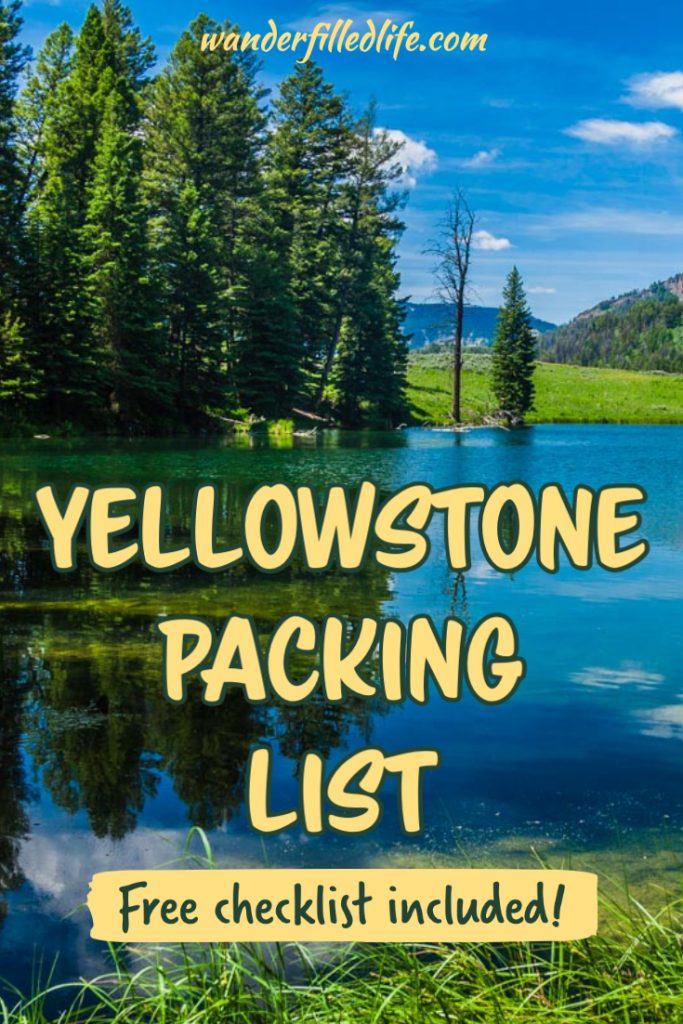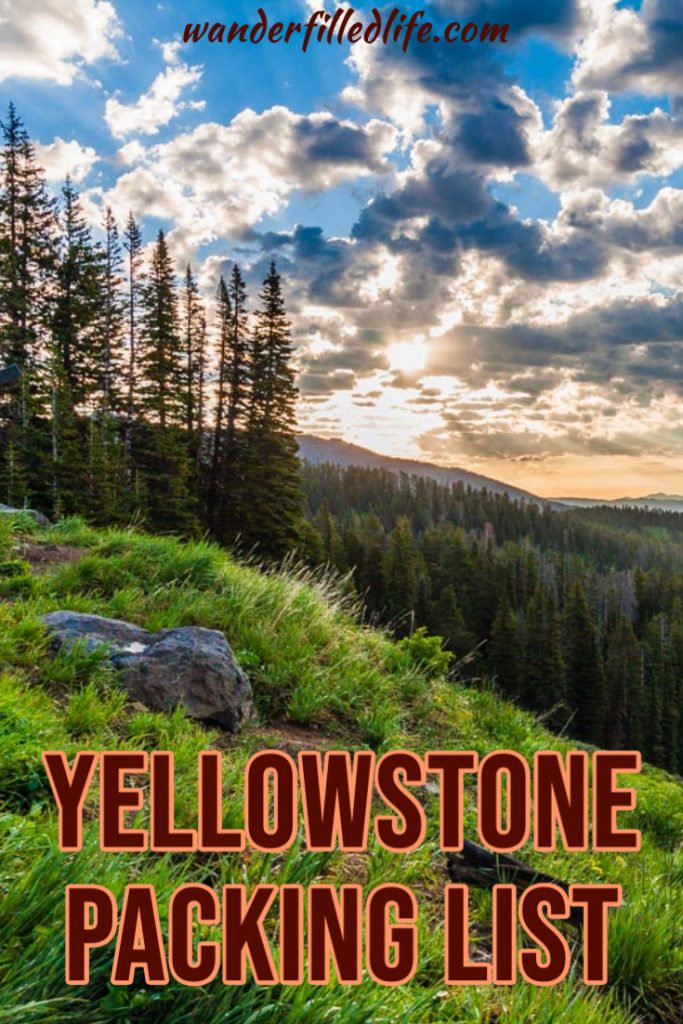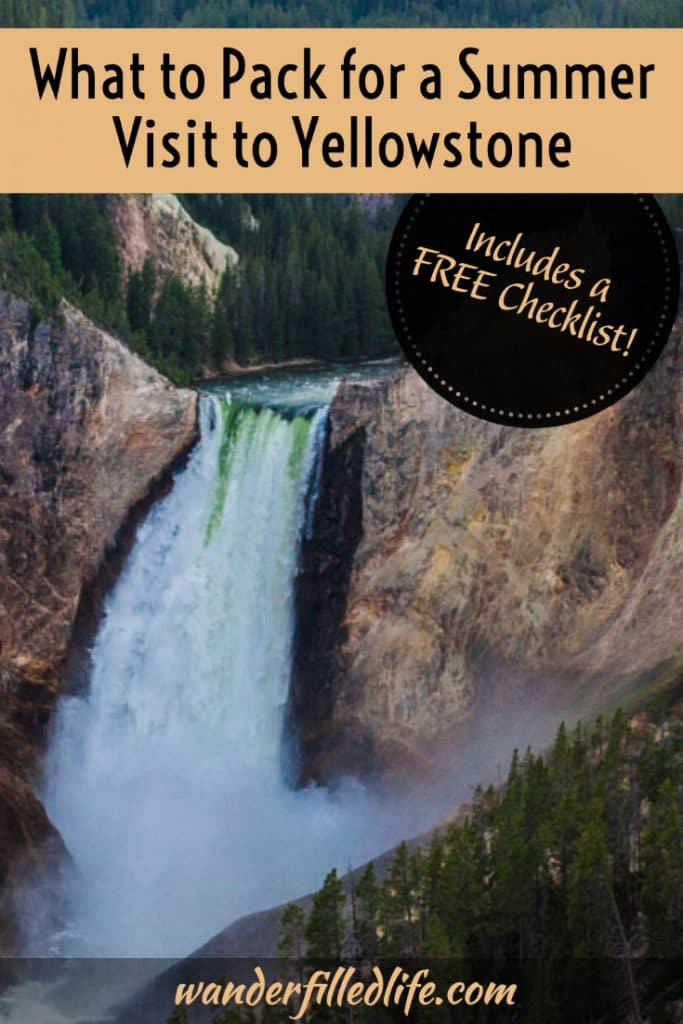Last Updated on February 18, 2024 by Grant
So, you’ve planned your Yellowstone National Park vacation and it’s time to start packing! No need to panic, though; we have you covered with our Yellowstone packing list. Not only will this list cover the basics of what you need to pack, I’ve also included our specific recommendations on what we take with us to just about every national park.
When it comes to packing for Yellowstone, the biggest thing to remember is that you will spend most of your time outdoors. Even if you’re not planning on doing a lot of hiking, you’ll be outside checking out the geysers, waterfalls, and other natural features. Thus, you’ll want comfortable clothes, sturdy shoes, a decent camera and a few other items to make your time in Yellowstone memorable in only a good way.
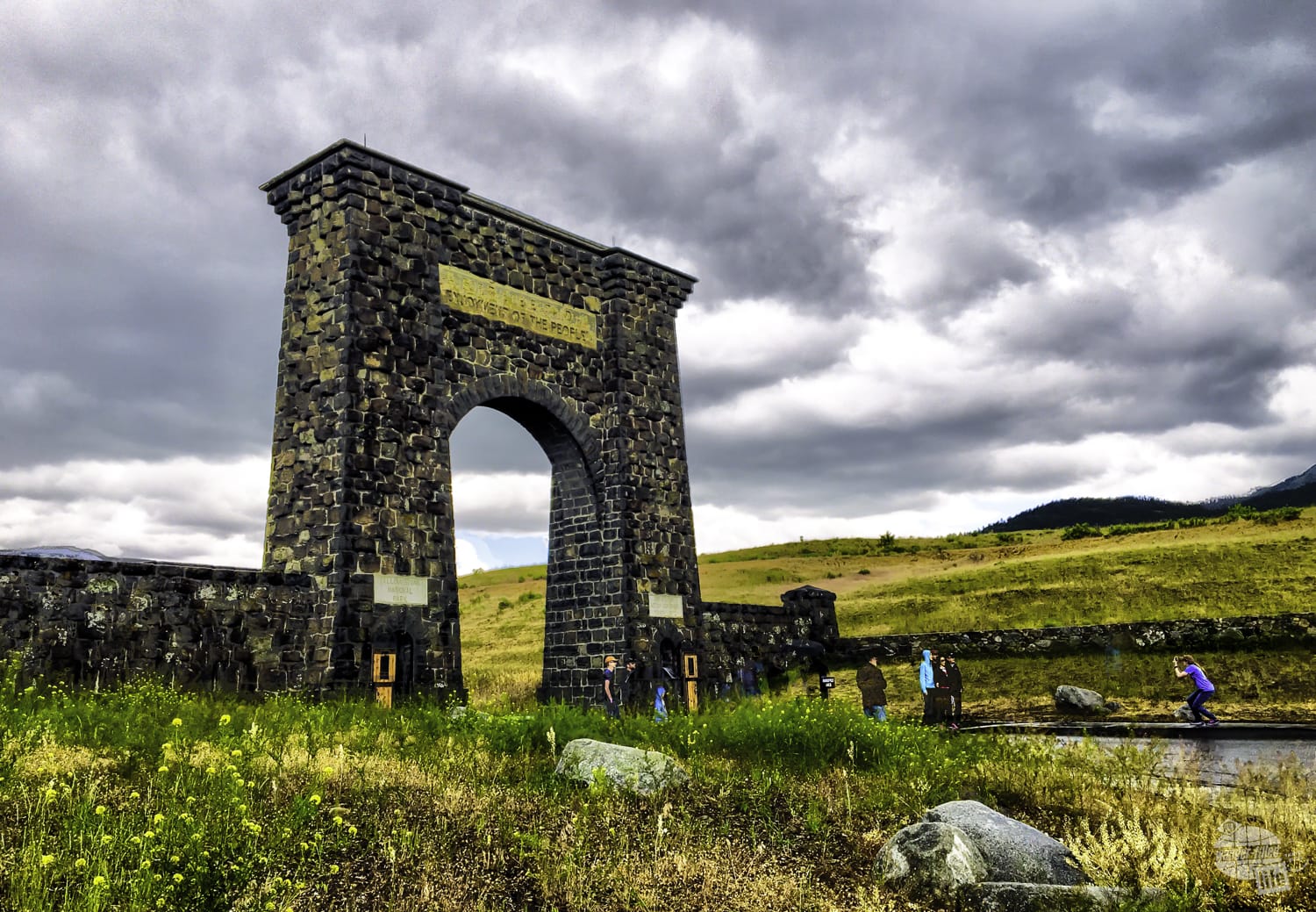
As with any packing list, exactly what you pack for Yellowstone will depend on whether you are staying in hotels or camping, flying or driving and personal preferences. Regardless, our Yellowstone packing list will point you in the right direction and make sure you have everything you need for a great visit.
This Yellowstone packing list will focus on preparing you for a summer visit to Yellowstone since that is when the vast majority of people visit the park.
(Disclaimer: When we link to places where you can buy our stuff or places we stayed, we are using special codes that earn us commissions on the sales at no additional cost to you. Please see our Review Policy for more information.)
What Clothes to Pack for Yellowstone
When packing for Yellowstone, the clothes you pack is, perhaps the most important decision you’ll make. Remember, you’ll spend the majority of your time driving around and stopping at the various overlooks, short boardwalks and, hopefully, taking at least a few short hikes. While you might have a couple of dinners at a hotel restaurant, you likely won’t need anything fancy. Opt for comfort, instead, and you’ll be all set.
Check out our tips for visiting Yellowstone NP in the summer.
Also, even when visiting Yellowstone in the summer, you need to be prepared for just about any type of weather. Yes, afternoon temperatures in June, July and August can be quite warm. Temperatures can also be quite cold, especially at night. In fact, I’ve seen snow in June more than once. For this reason, my best packing advice: LAYERS, LAYERS, LAYERS!
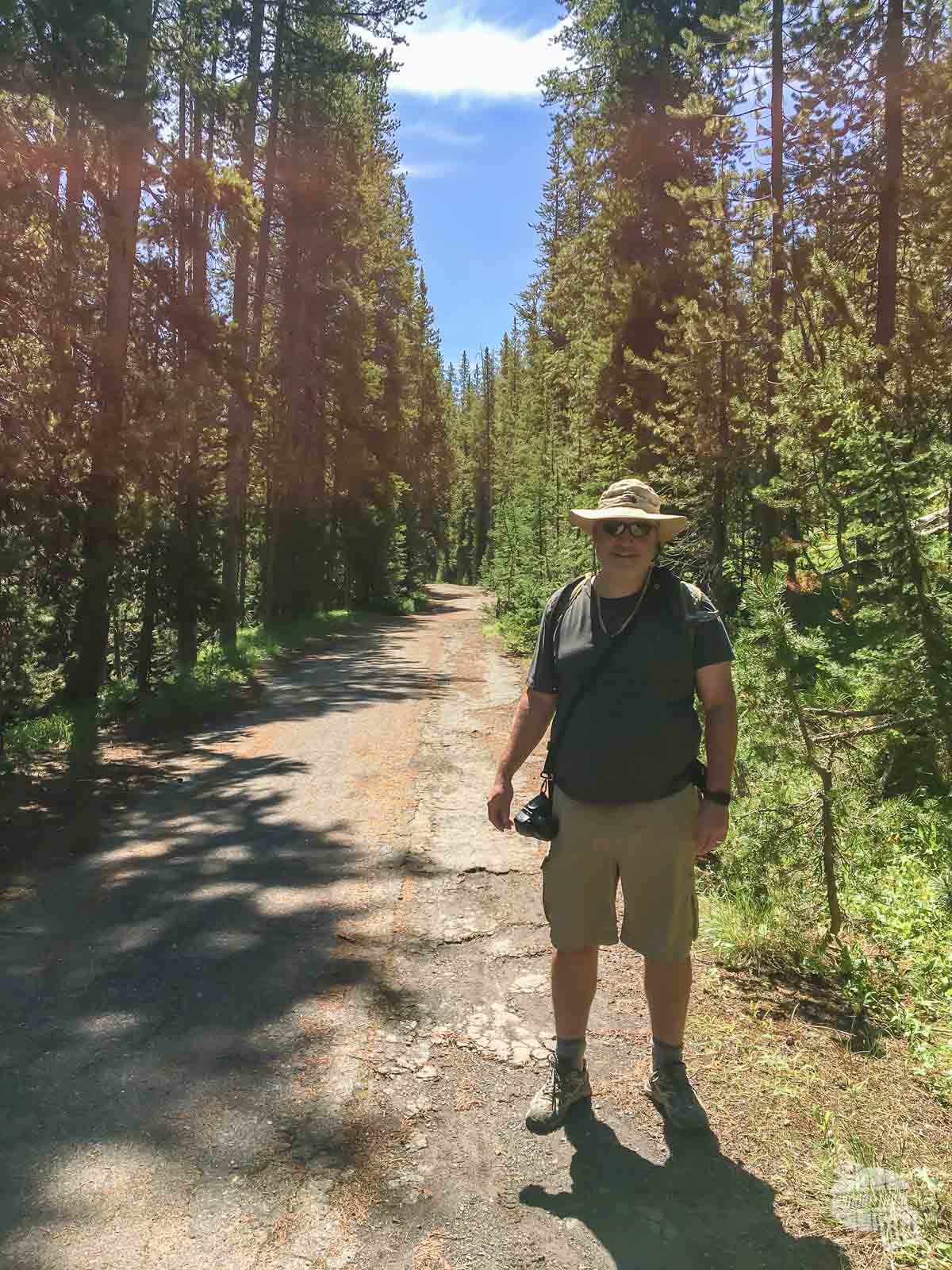
Shorts and Pants
Unless you are one of those people who just never wears shorts or, on the other hand, never wears long pants, you’ll want both shorts and pants when packing for Yellowstone. Pick items that are comfortable, move well and can be washed and dried easily. Grant and I tend to pack “hiking” clothes, even if we aren’t planning on doing a lot of hiking because they tend to be durable, comfortable and quick-drying.
We both like shorts and pants from Eddie Bauer. The Rainier and Guide Pro lines from Eddie Bauer are excellent. The only difference between the two is the Guide Pro pants and shorts have a leg pocket on both legs. The Rainier only has one leg pocket on the right leg.
Convertible Pants
If you’re not overly concerned with fashion, one easy option is to pack convertible (zip-off) pants. These are great for cool mornings and warm afternoons when you don’t have time to go back to your hotel or campsite to change. Yes, a lot of people think they look a little silly. Let’s be honest, though… the bears and bison in Yellowstone don’t care what you’re wearing.
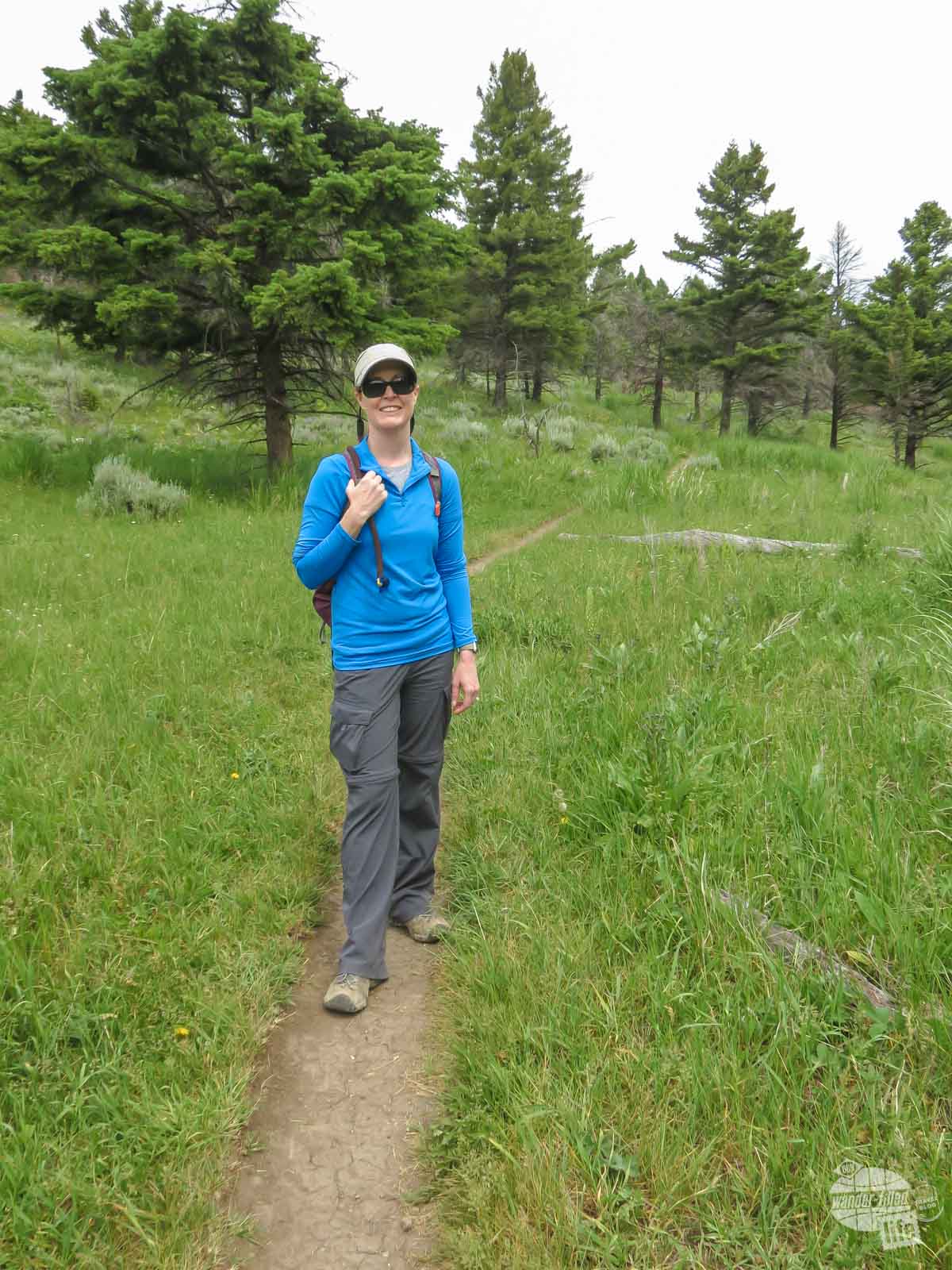
T-Shirts
Again, thinking about comfort and the ability to layer, taking a variety of short-sleeve and long-sleeve shirts is imperative. You’ll want items that you can potentially put another layer under or over. We tend to prefer moisture-wicking shirts as they keep you dry when you start sweating. Again, even if you’re not planning on doing a lot of hiking, there are quite a few boardwalks in Yellowstone that you’ll likely want to walk around. In the height of summer, you can sweat a bit even on these short and easy walks.
Grant really likes Eddie Bauer Resolution shirts for both hiking and general sightseeing. I tend to wear the Amazon Essentials Tech Stretch shirts. I’ve only worn them a couple of times so far, but I really like the way they look and fit.
Fleece or Sweatshirt
An outer layer of some sort is absolutely essential even in the summer in Yellowstone. We’ve experienced freezing temperatures, especially overnight and early in the morning, on every visit. Typically, a good fleece or vest will suffice. If you have space and prefer a coat or jacket, that’s not a bad option. Honestly, though, jackets tend to take up a lot of space. With enough underneath layers, a fleece is generally enough for us even on the coldest mornings.
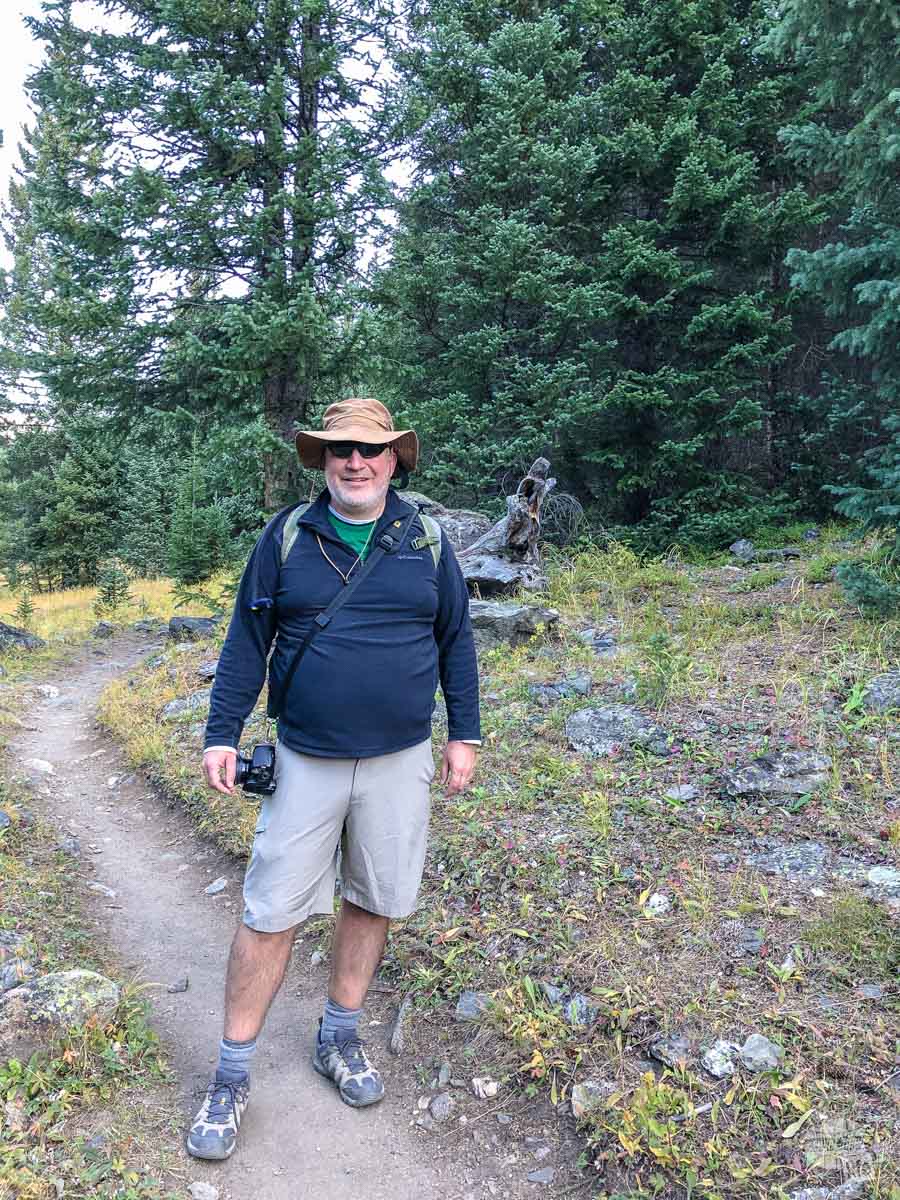
Sturdy Shoes
Ok, ladies, PLEASE hear me when I say this: you do not want or need any kind of fancy shoes in Yellowstone. Seriously, leave the heels at home! You’ll be doing a good amount of walking and you need to be comfortable. You’ll also want a shoe that can stand up to some dirt as you walk around outdoors. Additionally, it’s easy to get a heel stuck in the small spaces on a boardwalk and the paved paths are often uneven.
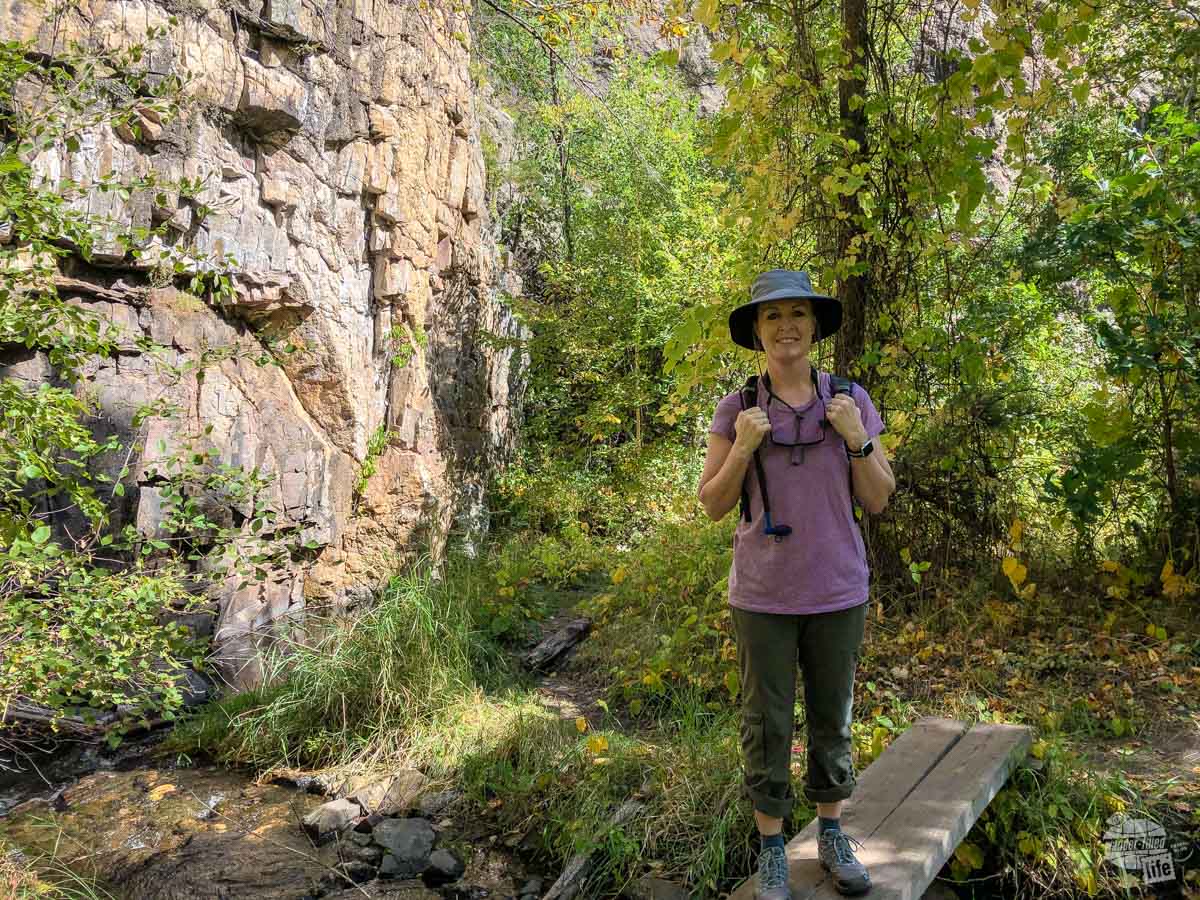
We wear hiking shoes quite often, even when just driving around. A pair of sneakers will suffice if you aren’t doing any major hiking. We often wear Teva sandals when it’s warm outside. That said, closed-toes shoes are a must for longer hikes and cooler temperatures.
Also, if you do have hiking shoes, don’t forget the appropriate socks! Grant loves SmartWool socks and I generally wear Wrightsock Coolmesh athletic socks.
- ECO-CONSCIOUS HIKING. This “go far. feel good.” originator gets an eco-friendly makeover thanks to recycled nylon and responsibly sourced Merino wool, with the same unmatched comfort it did in 1994. Elevate every hike with this cozy, capable classic.
- BLISTER FREE SOCKS: The Stabilizer Zone in arch locks sock in place to reduce socks slipping throughout the day, the Wrightsock Coolmesh II Lo Socks work to prevent blisters no matter how active your lifestyle is.
Hat
Whether you are hiking or just walking short paths and boardwalks, you’ll likely be spending a good amount of time in the sun. To help minimize your sun exposure, I suggest wearing a hat when you can. We generally carry both a ball cap and a wide-brimmed hat. The wide-brimmed hat will provide more coverage from the sun, while the ball-cap is usually a bit more versatile.
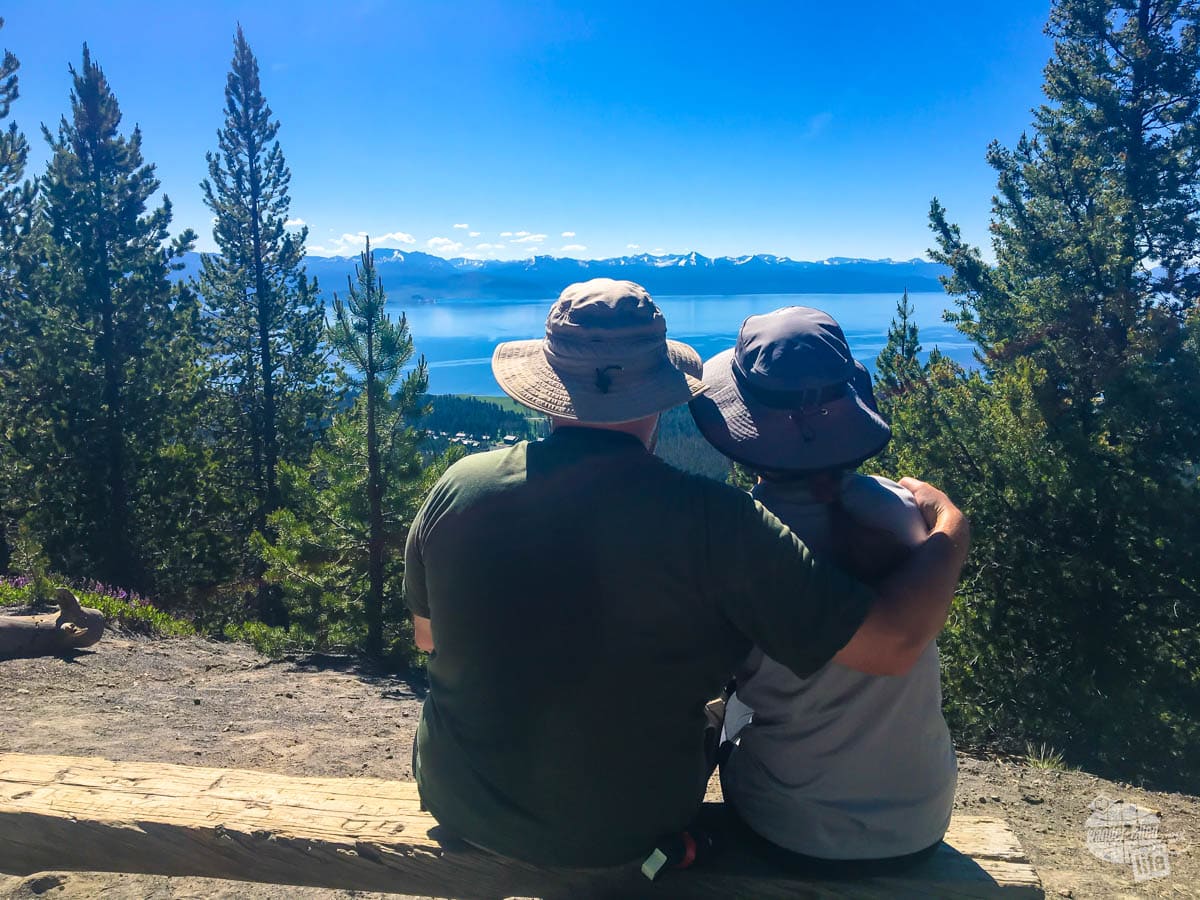
Raincoat
When you’re outside a lot, inevitably, you will have to deal with rain at some point. Especially if you have limited time at Yellowstone, you likely won’t want to just sit in your room/tent/camper and miss out on time exploring the park. To keep you on the go, enjoying the park, we suggest you just throw on a raincoat and keep moving. Yes, an umbrella can be useful as well but, honestly, umbrellas can be cumbersome in a crowd of people.
Other Clothes to Consider Packing for Yellowstone
Bathing Suit – none of the hotels have a swimming pool, but you can swim in a few of the rivers and lakes. We have not done this yet, but we are looking forward to finding some good swimming/soaking spots on our next trip.
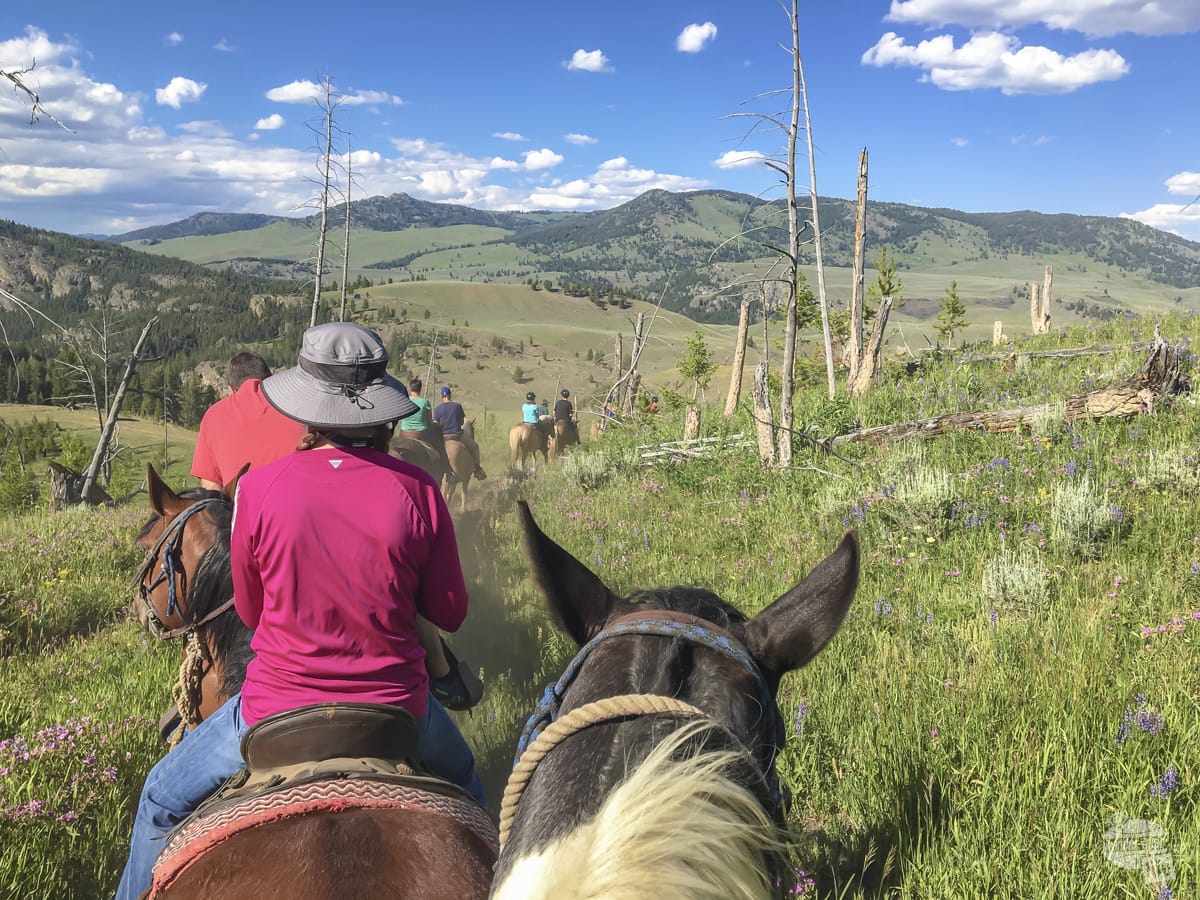
Jeans – we tend to not travel with jeans often since they are heavy and take up a lot of space. That said, they are extremely durable and can be worn multiple days without washing. Jeans are also great if you plan to do any horseback riding.
Read more about Yellowstone’s Old West Dinner Cookout and horseback riding.
Nice Outfit – most of the restaurants in the park are very casual, but there are a few for which you might want to dress a little nicer. Having one or two nice outfits (shirt, khaki pants, skirt, dress) is not a bad idea.
Hiking Gear to Pack for Yellowstone
While there is much to see from your car and right off the parking lots in Yellowstone, to really experience the wilderness of the park you should get out on the trails. There are a variety of trails at Yellowstone, for both day hiking and overnight backpacking trips. We’ve done several nice hikes but, honestly, are jonesing for even more!
Read more about Yellowstone day hikes we recommend.
Whether you choose an easy one-mile trail or a multi-day trek with backcountry camping, we hope that you will get out of your car and go for a hike. For that, you’ll want at least some basic gear to keep you safe and healthy.
Daypack
If you’re hiking any trails, especially in Yellowstone National Park, that are not heavily traveled or are longer than about a mile in length, I highly encourage you to take a daypack with basic supplies. You just never know when you’ll have an unexpected wildlife encounter, get injured or lost. Having some basic supplies with you will help keep you safe in the event of an emergency.
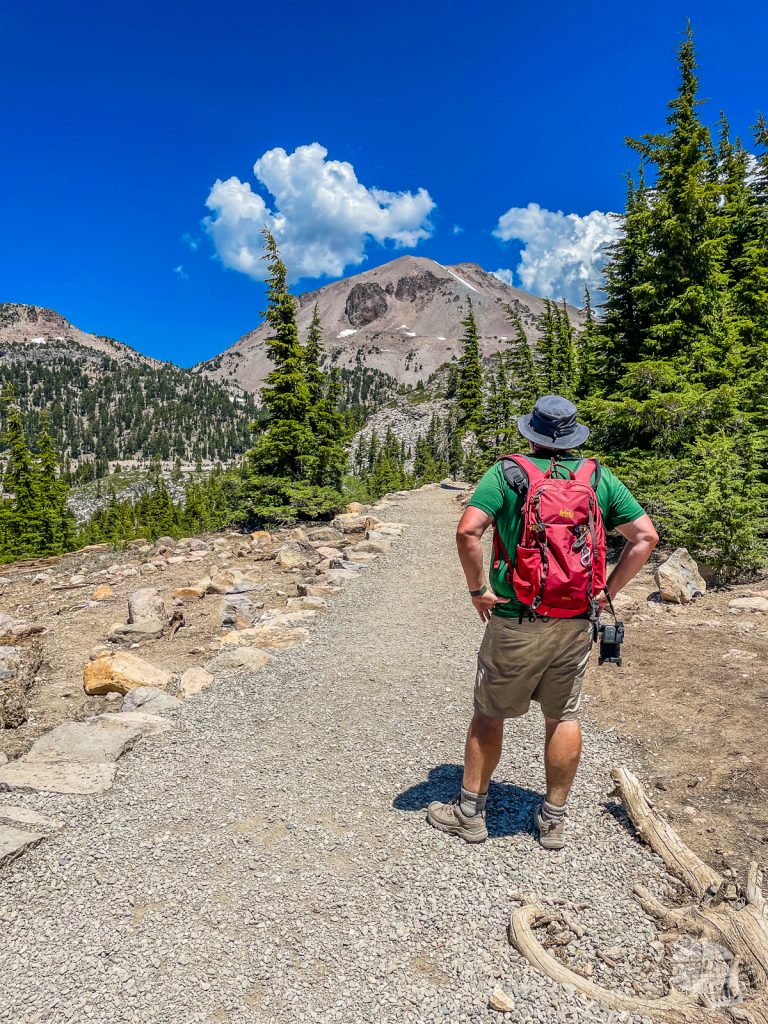
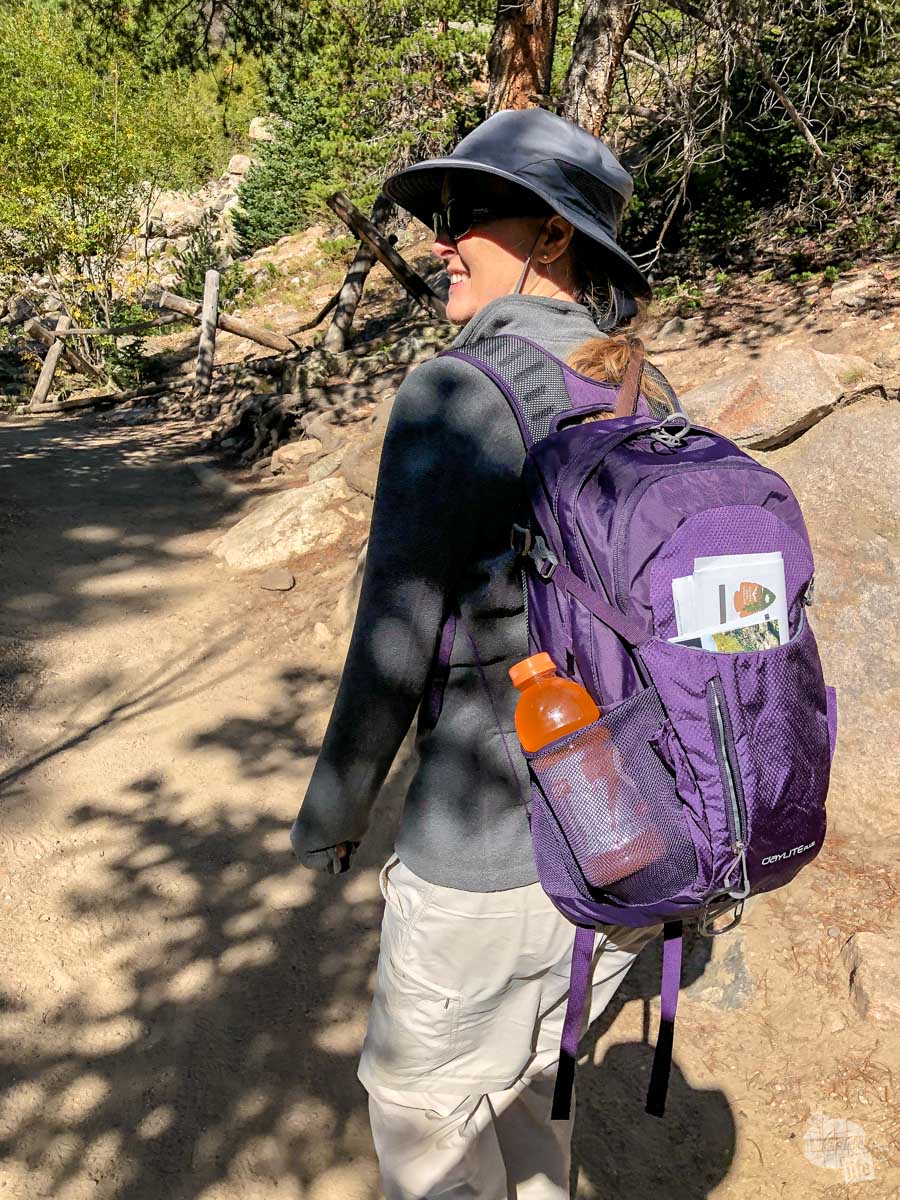
Currently, Grant uses the REI Trail 25 and I carry the Osprey Daylite Plus Pack.
Read more about choosing a daypack for hiking and travel.
- Premium efficiency and design
- Storage tuned to the each season
- Purpose designed to help mak the most of each exploration. Internal hydration sleeve
Water Bottle or Hydration Bladder
Keeping yourself hydrated is the best way to keep yourself safe when out on the trail. Even for short hikes, you should ALWAYS carry water with you. To cut down on waste, we encourage you to carry a refillable water bottle or, if you’re carrying a daypack, a hydration bladder. You can usually find water bottle refilling stations at the visitor centers.
As a standard, you should have one liter of water for each person for every hour you expect to be on a trail.
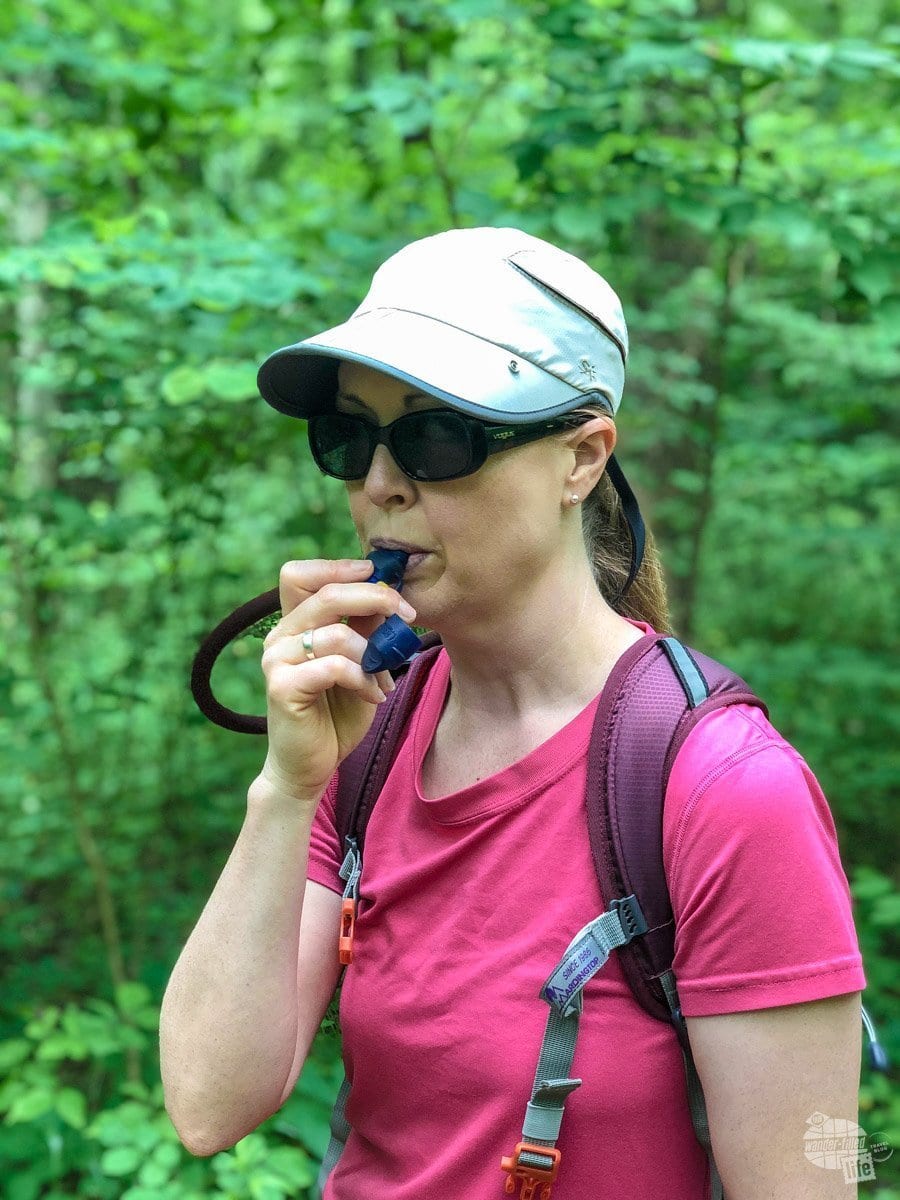
- 3D QuickDry: Soft-molded 3D design prevents contact between top and bottom layers when hanging open, dramatically speeding drying time and discouraging bacteria growth.
- QuickDry Hanger: A convenient option for storage or hang drying on or off the trail, integrated into the reservoir itself.
Bear Spray
Hopefully, you are already aware that Yellowstone is bear country. You are reasonably likely to see a bear at some point in your visit. Ideally, that will be from a safe distance. While you should to be prepared for a bear encounter, it is not something you need to be paranoid about.
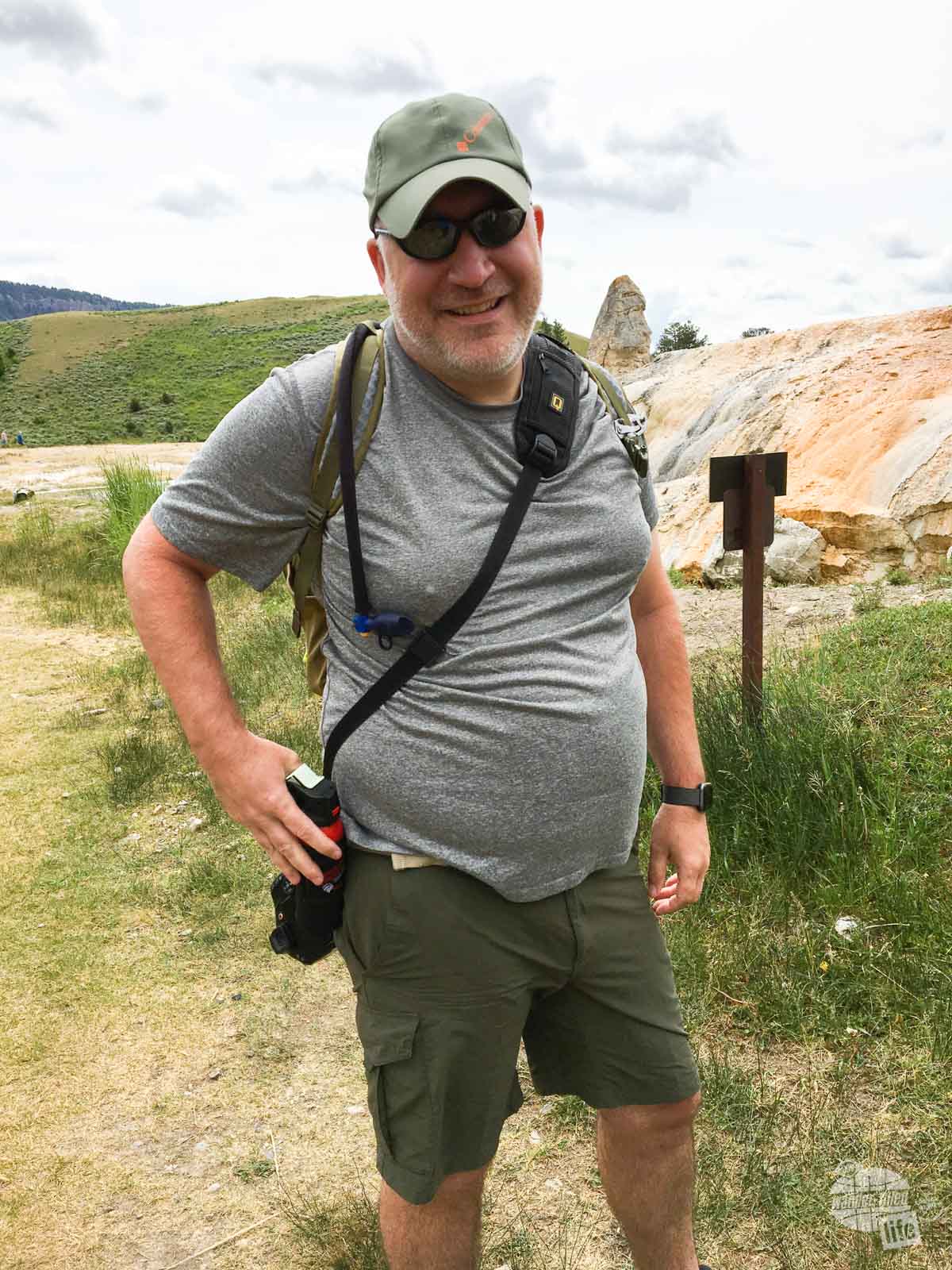
In terms of bear spray, you should carry it if you are hiking in the backcountry. If you are only staying on the well-traveled and heavily populated boardwalks, I don’t think bear spray is necessary.
For all of the hiking that we’ve done in Yellowstone, we’ve only run into bears on one trail (it was two separate black bears on the same trail) and those bears didn’t care at all that we were there. Yes, we were close enough to be thankful to have the bear spray but we were never in any real danger.
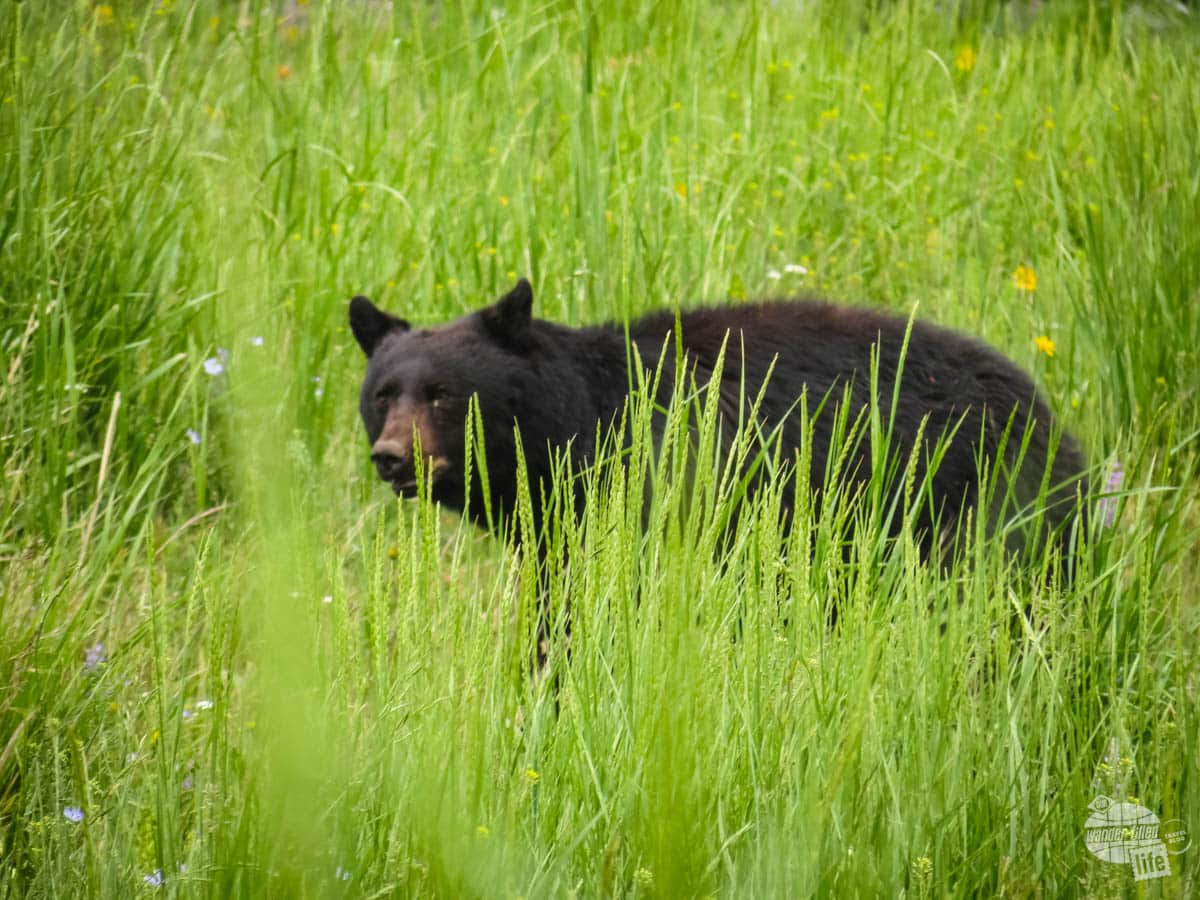
Basically, just because you see a bear does not mean that you’ll need to immediately whip out the spray and start fighting. Carry bear spray because it is the smart and safe thing to do, but don’t let it scare you or prevent you from exploring.
Full disclosure: Bear spray really is something that you should plan to buy when you arrive rather than pack and take with you. Bear spray is illegal in some states, you can’t fly with it and keeping it in a hot car can be bad. Fortunately, you can buy or rent bear spray when you get to Yellowstone easily at many visitor centers.
Read more about bear safety and how to use bear spray from the National Park Service.
Bug Spray
While bear spray is something that you, likely, will never have to use. Bug spray, on the other hand, is something you might use quite often. Anytime you spend a good amount of time outdoors, you can expect to encounter mosquitoes, ticks or other biting insects. Covering yourself with some sort of bug spray before heading out on a hike is always a good idea. We generally use Deep Woods Off.
- DEET mosquito repellent formulated with 25% DEET
- Long-lasting protection against mosquitoes
- Pump insect spray allows for easy application to skin and clothing
- Ideal bug repellent for camping, fishing, hiking and hunting
- Mosquito and tick repellent that also protects against biting flies, gnats and chiggers
Sunscreen
Again, since you’ll be spending a lot of time outdoors at Yellowstone, you’ll want to do what you can to protect yourself from the sun. Yes, you can get sunburned even if you’re not at the beach or sitting out by the pool! Granted, I am much more susceptible to sunburn than most people but too much sun exposure isn’t good for anyone.
Covering yourself with sunscreen if you’re out in the direct sun for more than a few minutes as a time is never a bad thing.
- Easy to Apply: Coppertone Sport spray on sunscreen has a continuous sprayer for application on any angle, and is easy to apply for quick, even coverage
Hiking Maps & Travel Guide
If you plan on doing any hiking, we suggest having a guidebook or at least a map with you. We have used A Ranger’s Guide to Yellowstone Day Hikes for a couple of visits and have really enjoyed it. The book has a good variety of hikes with great descriptions and detailed maps. Whether you buy a day hiking guidebook or just get some basic maps from the Visitor Center, you should always have a map when hiking. Getting lost in Yellowstone is NOT something that you want to do!
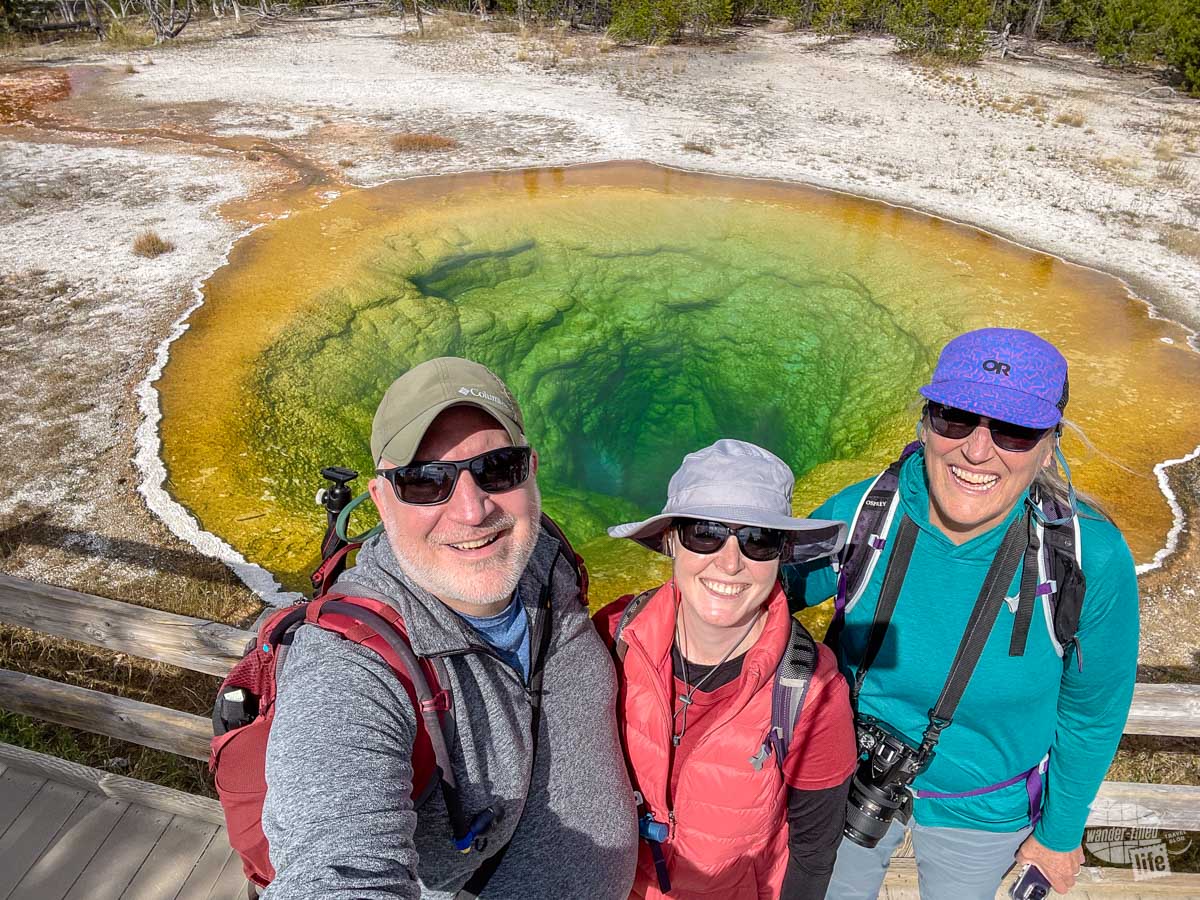
If you prefer a full guidebook, check out Moon’s Yellowstone & Grand Teton: Hike, Camp, See Wildlife by our friend Becky Lomax!
- Lomax, Becky (Author)
- English (Publication Language)
- 440 Pages – 09/06/2022 (Publication Date) – Moon Travel (Publisher)
Essential Hiking Gear
If you plan to do a reasonable amount of hiking, we highly encourage you to fill your daypack with the “Ten Essentials.” These are the items that you should have with you on longer day hike into the backcountry. While you will likely never need the majority of these items, having them with you will help you to survive any potential emergencies.
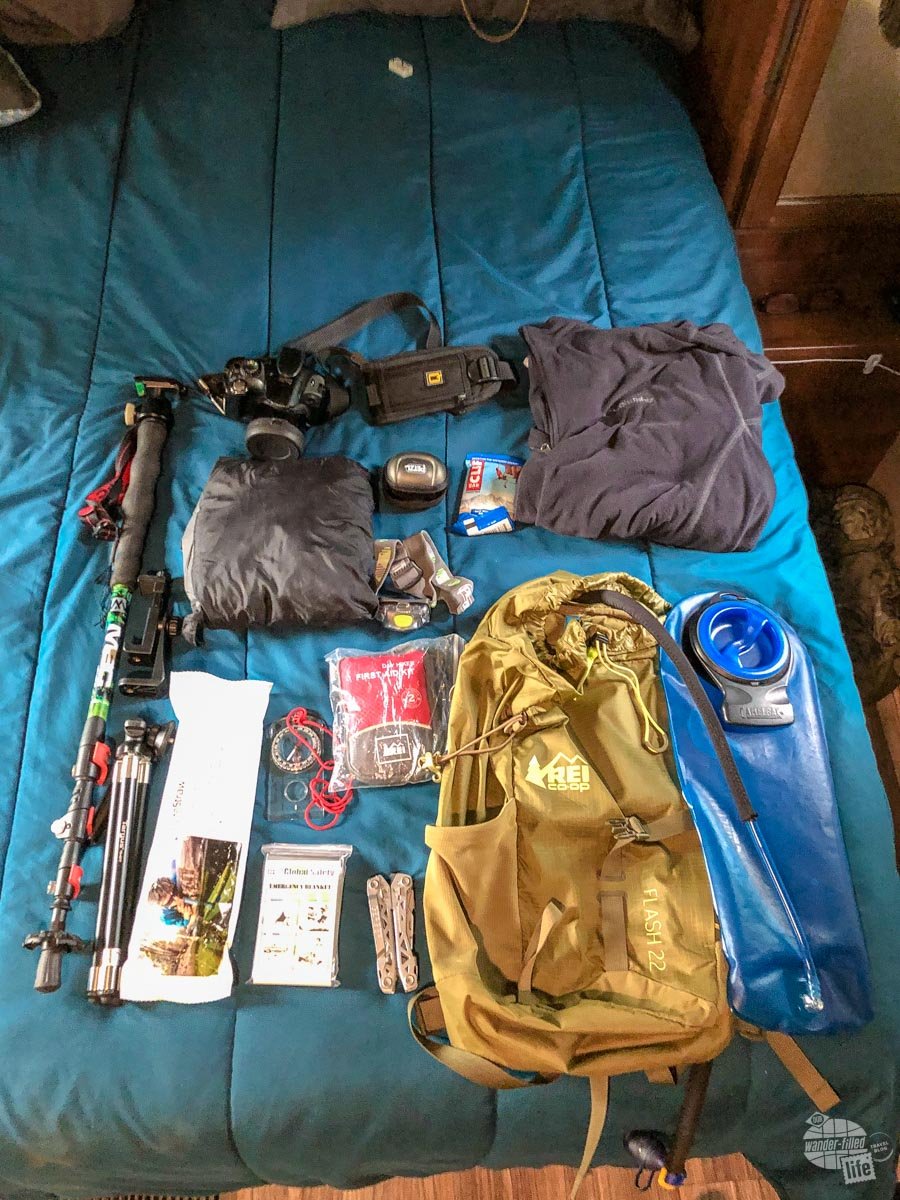
The basic items are: water, extra food, shelter, tools, fire starter, first aid kit, illumination (light), navigation, sun protection, weather protection.
We’ve already covered some of these items as basic outdoor gear, such as water and sun protection. Others, such as shelter and a fire starter are geared more towards longer hikes with more risk for getting lost or injured. Prep yourself for whatever activities you expect to enjoy while at Yellowstone.
Read more about the essential hiking gear we recommend.
Camera Gear to Pack for Yellowstone
Even if you’re not a professional photographer, you’ll likely want to take some pictures while visiting the park. Between the scenery, wildlife and personal memories, you’ll want pictures. For that reason, we include at least basic camera gear on our Yellowstone packing list.
Read more about finding and photographing wildlife in Yellowstone.
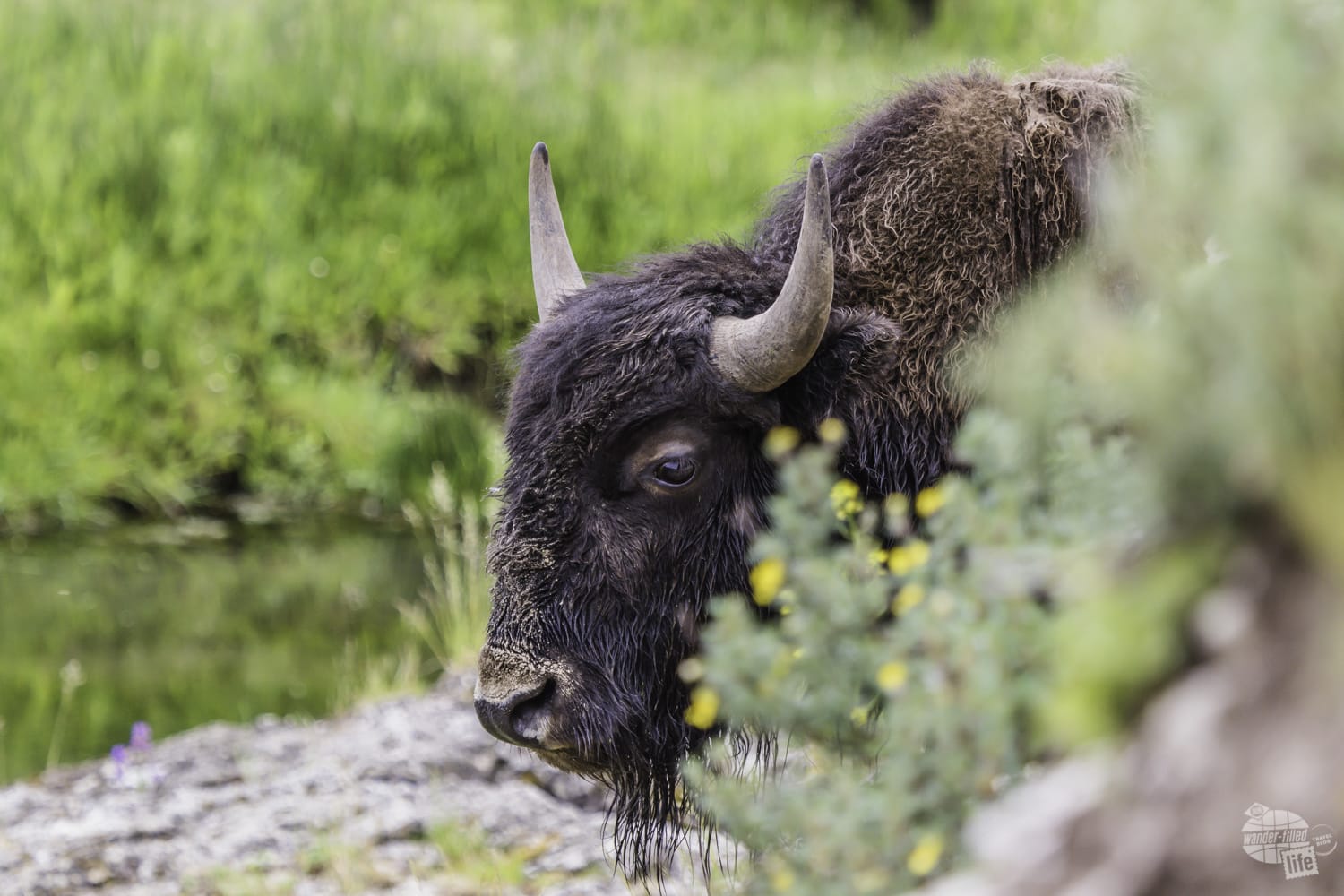
Pro Tip: The photographer of the group should NOT be the driver while inside the park. You are likely to spot wildlife on the side of the road at any point in time. Since you cannot stop on the road, it is often beneficial for the photographer to get out and start taking pictures while the driver finds a place to park.
Smart Phone
These days most everyone takes a cell phone with them everywhere they go. With your phone you can stay in touch with loved ones through phone calls, text messages and social media. You have GPS and directions for finding your way around. And, of course, you can use it to take pictures and videos anywhere you are.
While we have bigger and better cameras, the truth is that we take a lot of our pictures with our iPhones. In fact, Grant always says that the best camera is always the one that you have with you. For most people, that is their phone.
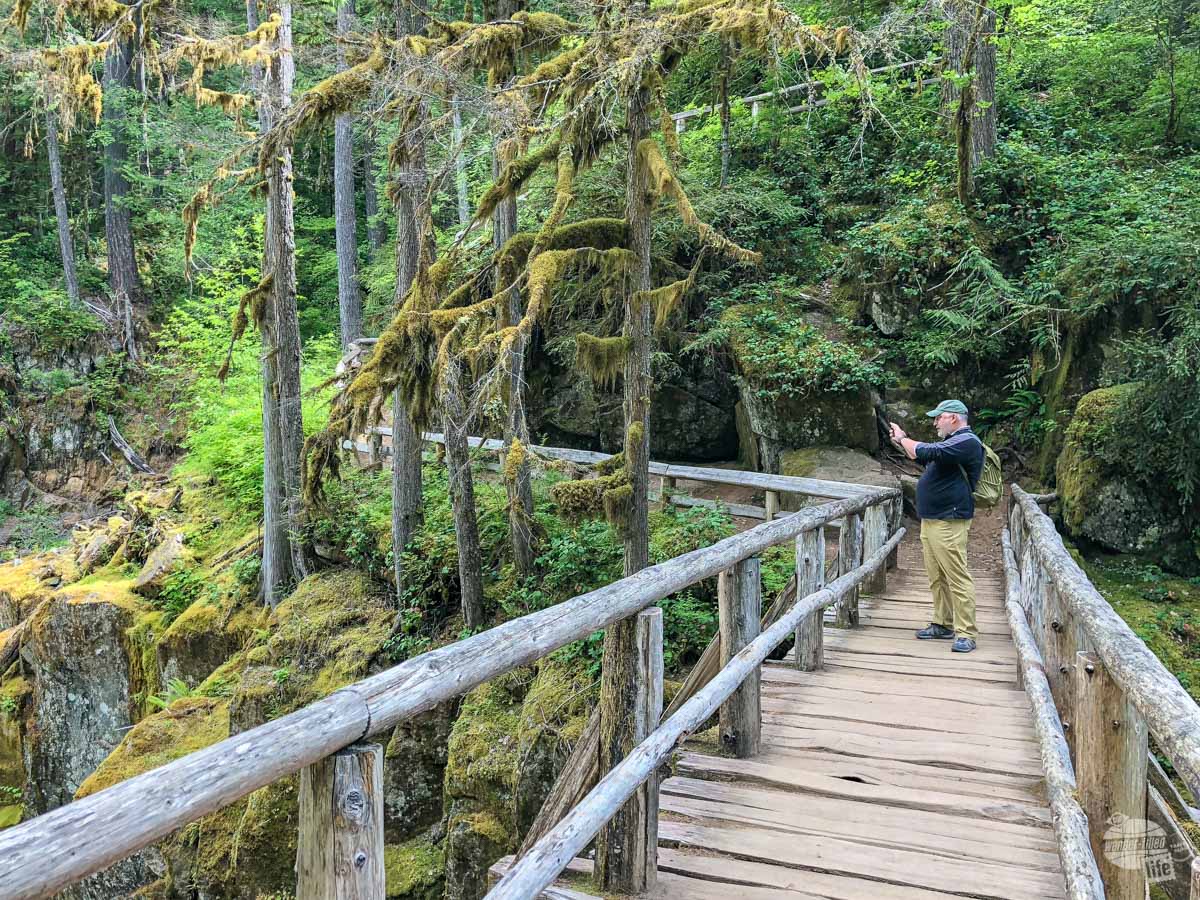
Whether you use an iPhone, Android or something else, chances are good that the camera on your phone is quite capable of taking fantastic photos. Honestly, the biggest thing you’ll miss by relying just on your phone is an extensive zoom and good enough quality for large prints.
Check out Grant’s iPhone photography tips for beginners if you want to improve your photography skills without buying a full camera.
Camera Options
To step up your game just a little bit, consider a point and shoot camera that has a significant optical zoom (20x or more). You can find relatively inexpensive cameras for basic amateur photography that have built-in zoom lenses. In particular, Canon makes a line of “super-zoom” or “bridge” cameras that are light and have powerful zoom lenses. Grant carried an SX40 for years before upgrading. You can get the newest model, the SX70, for around $550. It weighs about a pound and has a ridiculous 65x zoom.
If you are looking to spend some serious money before you travel to Yellowstone, you should take a look at Grant’s favorite travel camera, the Sony RX10. He has been using his for years now and, while it is pricey, it is easily the best one camera you can take on a trip to Yellowstone.
Read more about the Sony RX10 in Grant’s in-depth review here.
- World’s Fastest AF acquisition speed of 0.03 sec. Optical image stabilization technology developed by Sony is valuable for handheld still and movie shooting, especially in low light or at the ultra-telephoto end of the zoom range up to 600 mm
- 315 phase-detection AF points covering Approx. 65% of the frame. Light etering mode- Multi pattern, centre weighted, spot (Standard/Large), entire screen average, highlight
- ZEISS Vario-Sonnar T 24-600mm3 F2.4-F4 ultra-zoom Lens
- 20.1 MP 1″ back Illuminated Exmor RS stacked CMOS sensor w/ DRAM. Dimensions (W x H x D) (CIPA) -5 1/4 x 3 3/4 x 5 3/4 inches, 5 1/4 x 3 3/4 x 5 1/8 inches (from front of lens to monitor). Weight-2 pounds 6.7 ounce (Battery and SDXC Card included) / Approx. 2 pounds 5.1 ounces) (Body Only)
- 24 Fps4 continuous shooting up to 249 frames with AF/AE tracking. Filter diameter:62 mm.
If you’re a more advanced photographer, I’d suggest taking as much camera equipment as you can. In Yellowstone, you’ll want to take wide-angle scenery shots and you’ll need zoom capability for animals off in the distance. Since you will be in a car, traveling with extensive camera gear is easier.
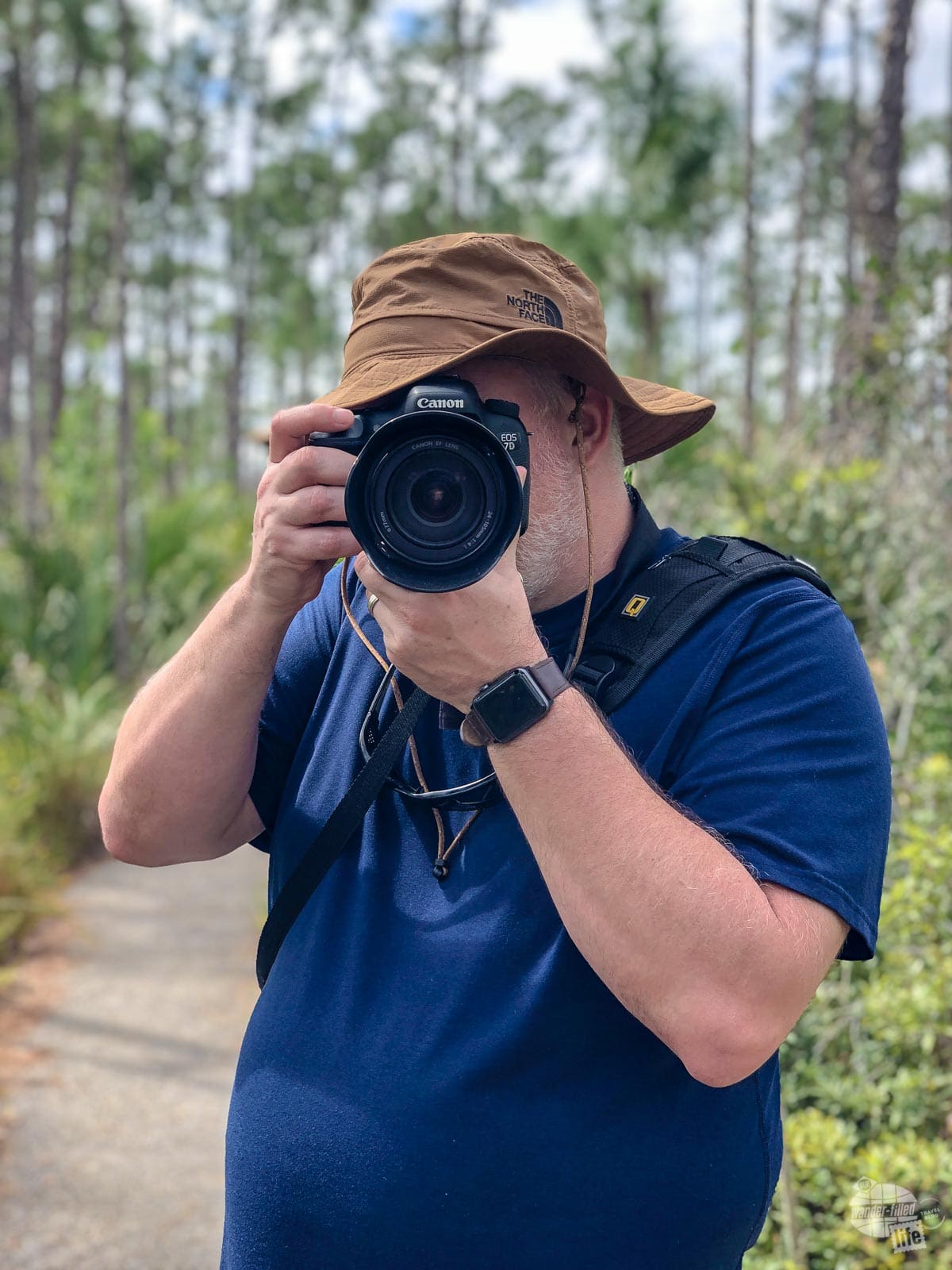
For those with a DSLR but limited gear, consider renting a professional long zoom lens. We used to rent a 100-400mm zoom from Aperturent, which is local to us in Atlanta.
Read more about the camera gear we use.
Other Camera Gear
Tripod or Monopod – if you’re looking for amazing sunrise or sunset photos or just want a little extra support for your bigger cameras, consider taking a monopod or tripod. Even a small one can make a big difference.
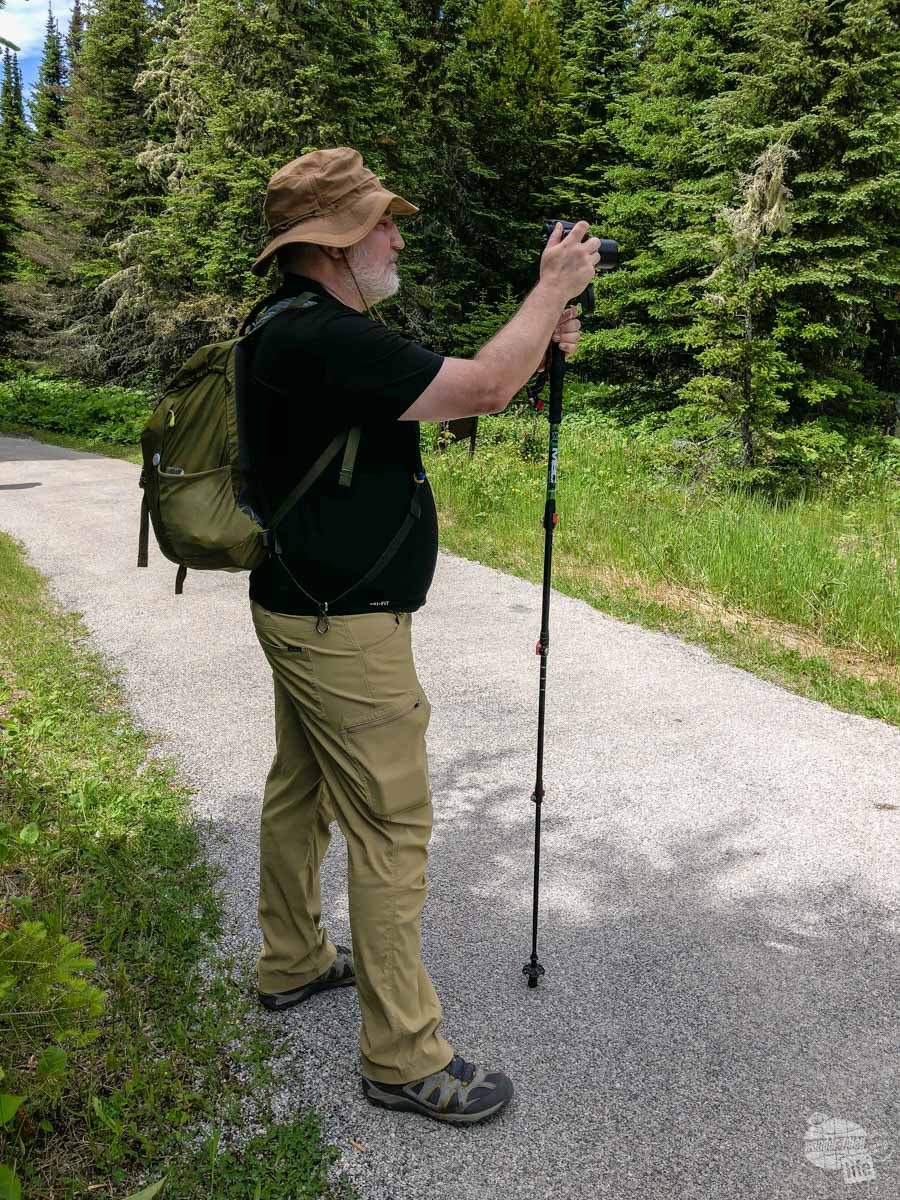
Selfie Stick – while selfie sticks can be annoying, they are great for getting pictures of your entire family with some great scenery in the background. Ours can even double as a small tripod.
Sling – for keeping your camera handy while hiking, consider a camera sling to keep your camera safe and accessible. Grant is a huge fan of the Cotton Carrier Sling Belt. This belt holds the camera while the sling strap offers drop protection when the camera is in your hands.
Use the code WANDERFILLED at checkout to get 10% off!
- SLINGBELT. Carrying your camera with heavy lenses can be tough, which is why photographers love our Slingbelt! Easily strap in your camera and go! Made with an adjustable hip belt and secure locking-mechanism, you can enjoy doing what you love without worrying about your camera.
Other Gear to Pack for Yellowstone
Now that you’ve got the essentials for clothes, day hiking and taking pictures, here are few other items for your Yellowstone packing list to make your visit enjoyable.
Sunglasses – just like sunscreen and a hat, sunglasses are just about essential for anyone spending time outdoors. Not only do they protect your eyes from the sun, but they also protect your eyes from dirt and other debris in the air.
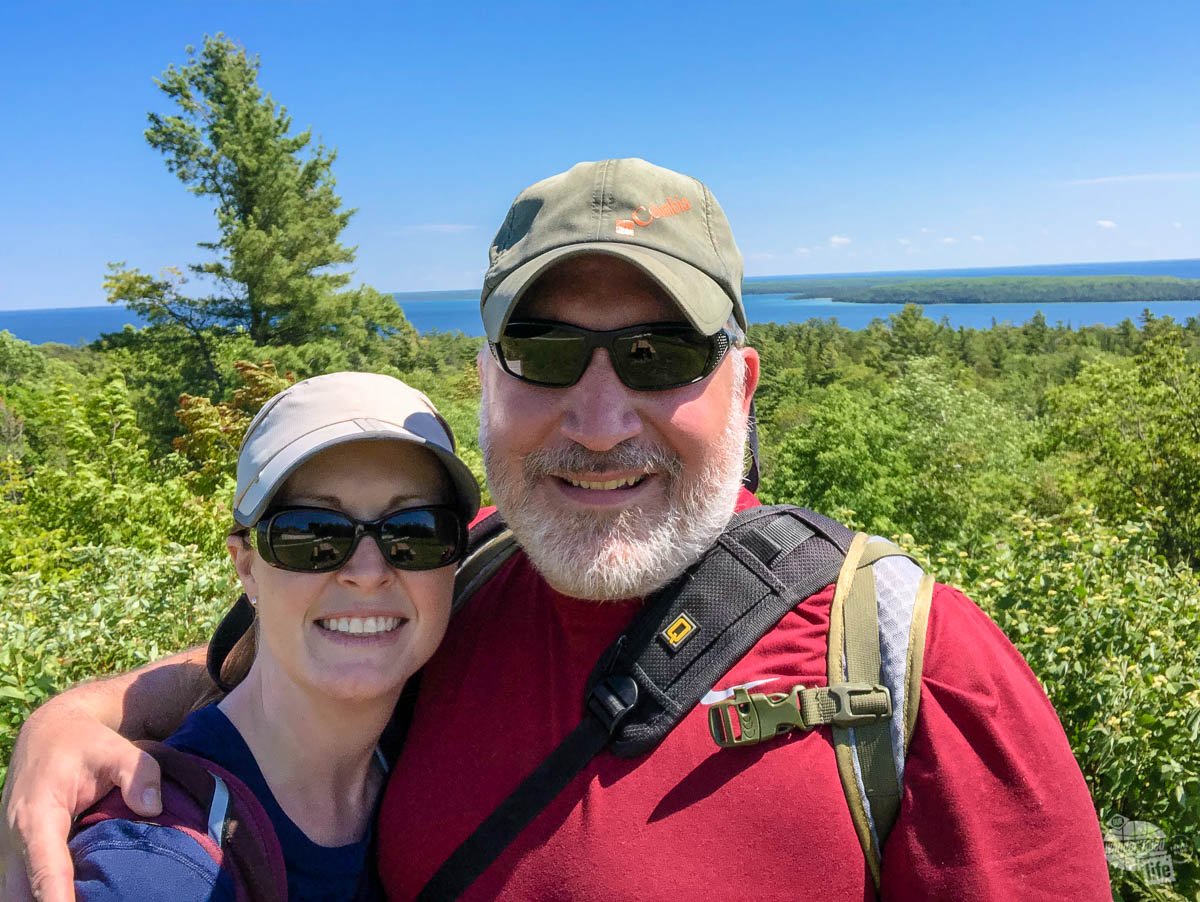
Food/Cooler – if you’re flying in you won’t be able to pack much, but you’ll still want to pick up some basic food once you arrive. While there are several restaurants and snack bars inside the park, they aren’t always where you need them when you need them. And, let’s be honest, a picnic among the amazing scenery of Yellowstone can’t be beat! Whether you pack a full meal or just some snacks, I highly encourage you to keep food with you at all times. You never know when a “bison jam” will turn your planned 12:30 lunch into a 2:00 lunch because you were stuck in “traffic.”
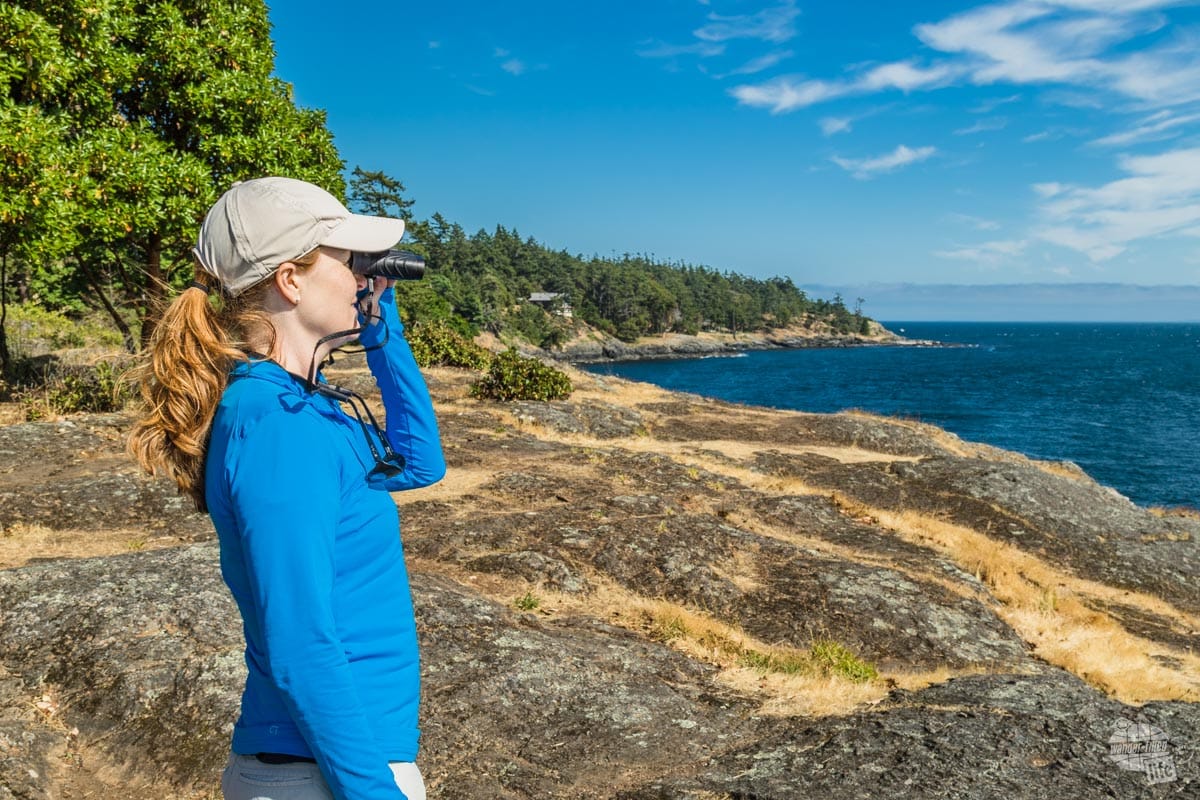
Binoculars – while there will be plenty of wildlife to see close up, like elk and bison, some critters are a bit more elusive. In fact, I can almost guarantee that they only way you’ll clearly see a wolf is with some sort of zoom, whether that is binoculars, a spotting scope or though a zoom lens on your camera. Thankfully, when wolves are spotted many folks are great about sharing their view in a spotting scope. Still, not having to rely on someone else’s generosity is nice.
Where to Get Additional Supplies
While Yellowstone is a very remote and wild area, there are a good number of large gift shops that carry clothing, food and basic necessities. Despite our best efforts, we have had to buy additional layers, a new hat and many other items while in the park. Though, let’s be honest, having a few of those items as souvenirs is not a bag thing.
Still, the stores are not always fully stocked, options tend to be limited and the stores are not always easy to get to. While you can rest assured that you’ll be able to get food and some basic necessities, you won’t always have the luxury of being picky.
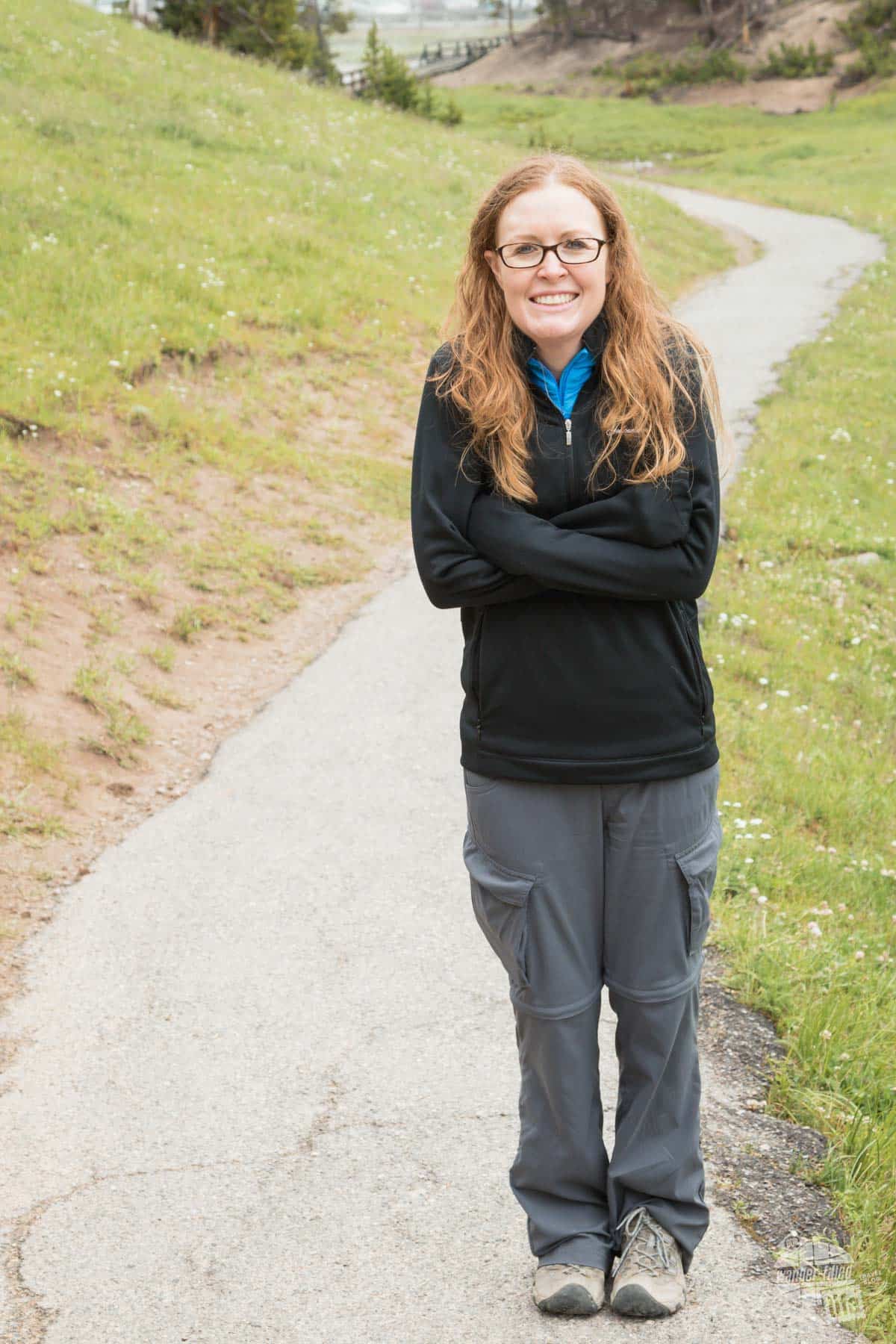
The gateway cities generally have good shopping options. Those are all quite a ways out of the park, though. If you’re staying in the park (which we recommend), you’ll want to make sure you’re fully stocked to minimize your travel time out of the park for supplies.
If you’re coming from the east, there is a Walmart in Cody, WY where you can stock up. Still, it’s nearly a 2-hour drive from there to Fishing Bridge, the first developed area coming in from the East Entrance. That said, Cody is well worth a visit before or after visiting Yellowstone.
Read more about visiting Cody, WY.
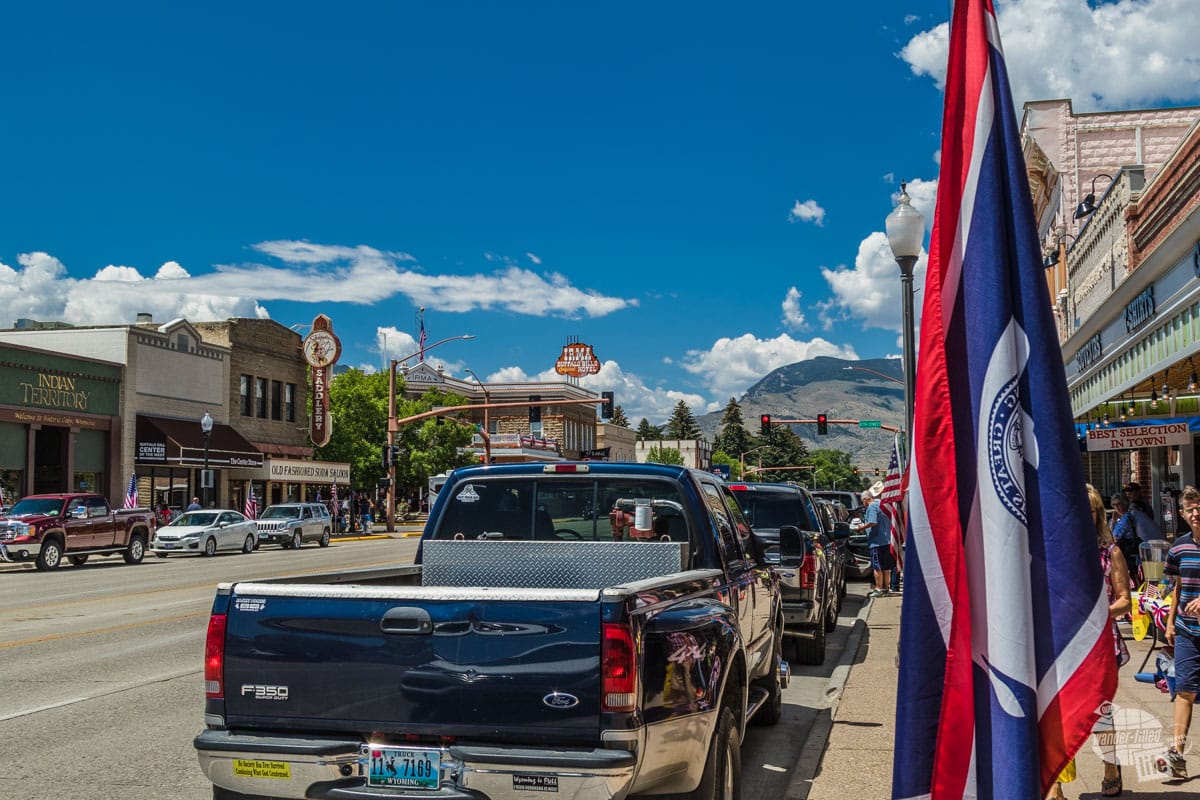
Jackson, WY also has good shopping and dining options. You can easily combine a stop there with a visit to Grand Teton NP. West Yellowstone and Gardiner (both in Montana) are a bit small but will still have decent options.
Laundry
To cut down on how much you need to pack, consider doing laundry at some point during your trip. There are a couple of laundromats inside the park and in all of the gateway cities. If you are on a longer vacation (more than about a week or 10 days), I strongly encourage you to plan a laundry day. Packing enough clothes for 2 or 3 weeks generally just isn’t feasible.
I know that laundry on vacation isn’t always ideal, but it sure does cut down on how much you need to pack. You’ll often find showers and laundry at the same facility in Yellowstone, so if you’re camping, you can take care of both at the same time.
Final Thoughts on Your Yellowstone Packing List
There is no way that our Yellowstone packing list could cover every single item that every person will need when packing. These basic items listed above, however, are things that everyone should pack for a comfortable trip. Just be sure to also pack any medication or other specific personal items you need that are not easily replaced.
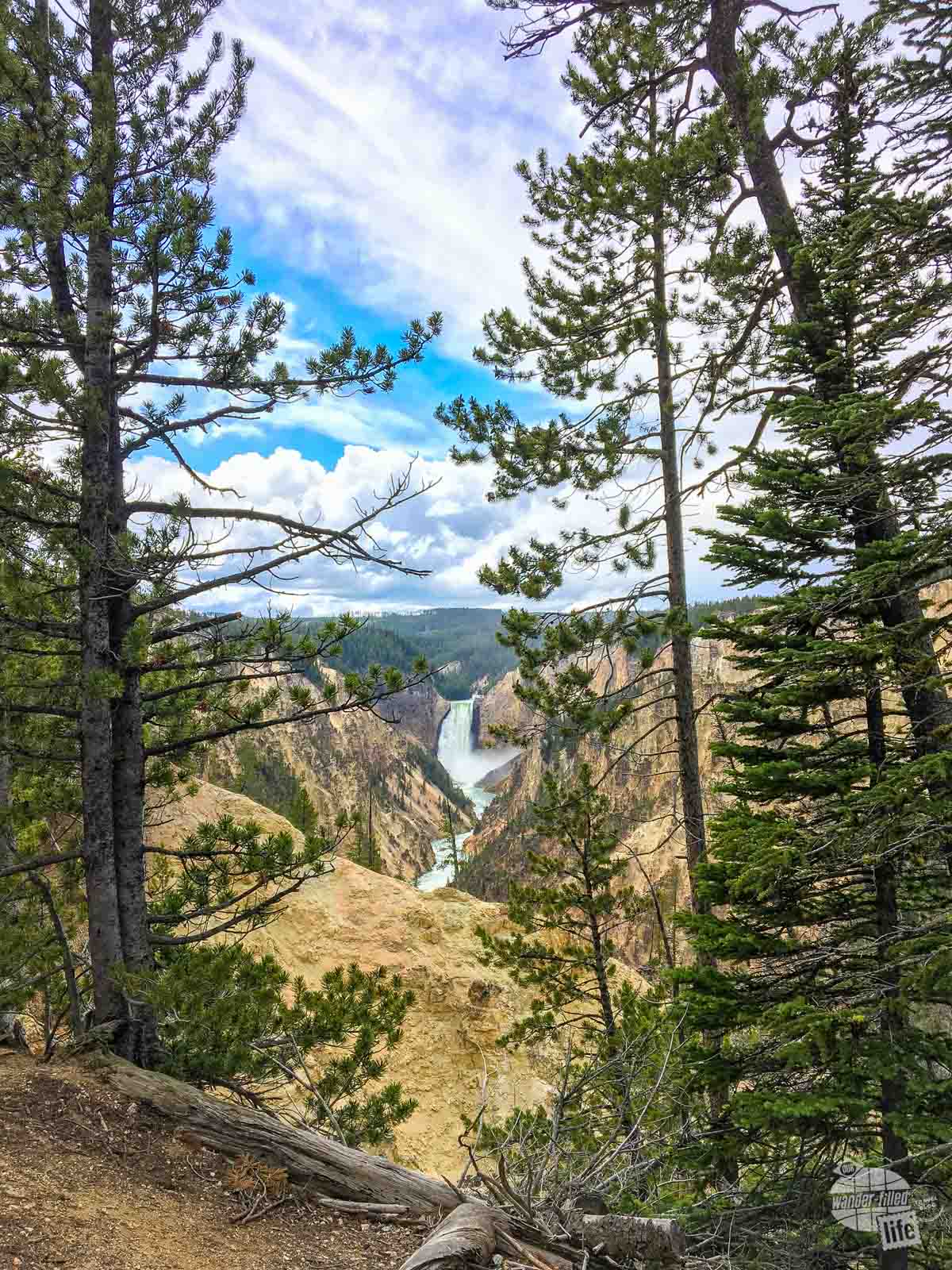
In all, packing for Yellowstone is not that different from packing for any other national park or any other vacation, for that matter. Just remember to pack layers that are comfortable for outdoor exploration and you’ll be all set.
Most of all, a great visit to Yellowstone is less about what you pack and more about what you see and do. Plan to get out and enjoy the scenery, wildlife and unique natural features and you’ll enjoy your visit.
Travel Resources
What do you use to find a flight?
We use Skyscanner to find deals on flights. Skyscanner has a great interface and compares tons of airlines for the best pricing and routing. That said, it does not always have every airline and some airlines will have better deals on their website. Still, Skyscanner is a great place to start.
Click here to search for a flight.
What do you use to find a hotel?
We typically stay at Hilton properties, so we use the Hilton website. You can find good Hilton Honors discounts or AAA discounts for a hotel there. We make great use of our free night certificates from our Hilton Honors American Express.
Click here to book a Hilton property.
If there are no Hilton properties available, we use TripAdvisor to read reviews and book the hotel. We find we can get the best price that way.
Click here to search for a hotel.
We recently partnered with Stay22 to add interactive maps to each of our destination posts. This will allow you to see a plethora of hotels and vacation rentals all in one responsive map of the area.
What if I need more space than I can get at a hotel?
We use Vrbo for the times when we have rented a cabin for a weekend getaway, like this cabin in Townsend, TN, or needed to rent a house for a large family vacation. We had a great experience with them in terms of refunding deposits when COVID hit and will continue to use them.
Click here to search for a vacation rental.
Who do you use for rental cars?
As a general rule, we book with Hertz for rental cars. We have had nothing but good experiences with them. Plus, we really like unlimited mileage and not worrying about crossing state lines. We have even rented from Hertz overseas in both Slovenia and Croatia.
Click here to book a rental car.
How about booking a cruise?
We have found some amazing prices for booking a cruise through Cruise Direct. We have saved a lot of money on our cruises compared to what we found elsewhere, making a last-minute Bahamas cruise even cheaper.
Click here to book a cruise.
What if I want to rent an RV?
We highly recommend Outdoorsy for RV rentals. We rented a camper van for a week to visit Rocky Mountain National Park for the elk rut and Custer State Park for the Buffalo Round-Up and had a blast. The program was easy to use and we really enjoyed the freedom of having a camper van for that trip.
Click here to rent an RV.
What do you use for booking tours?
We don’t often book tours. Typically, we like to do stuff on our own. That said, there are some experiences you can’t have any other way. So, when we do want to book a tour, we always check Viator first.
Click here to book a tour.
Do you use anything to get discounts on the road?
We make extensive use of both Good Sam and AAA on the road. Good Sam is normally regarded as a discount card for RVers at campgrounds and Camping World but anyone can use the 5 cents off a gallon at the pump at both Pilot and Flying J.
Click here to get a Good Sam membership.
We have had AAA as long as we have been married and it has more than paid for itself in discounts at hotels, aside from the peace of mind of having roadside assistance. Add in paper maps and the ability to get an international driver’s license and it is more than worth it for any traveler out there.
Click here to get a AAA membership.
